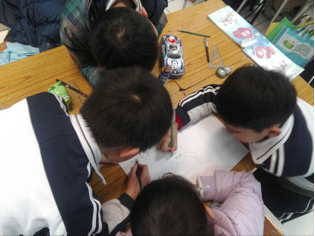Learning Through Participation
Auerbach refers to participatory teaching as the “dance of teachers and students as they negotiate their respective goals, expectations, and understandings” (as cited in Richard-Amato, 2010, p.92). Students’ interests and questions are not only accounted for, but also often become the leading focus of their learning journey. Participatory teaching allows students to form their personal meanings and own understanding by being active participants in their learning. A classroom incorporating such methodologies promotes student learning through problem solving and working together in groups.
Cooperative learning methodologies tie deeply with participatory teaching and appeal to the affective domain in second language acquisition. Students learn through working together and inquiring on questions that either they have come up with themselves or are posed by the teacher. The teacher in this approach becomes the facilitator and delegator rather than the knowledge keeper. Learning that occurs through this process goes beyond textbook concepts. It can encourage intrinsic motivation to learn, curiosity, and creativity. Successful implementation of such methodologies can also facilitate positive relationships amongst students, which all work to enhance second language learning through the affective domain.
An example lesson that I have taught in the past utilizing this approach would be when I introduced students to fables. Students were first organized into their regular groups, which we called “home groups” and then numbered off into jigsaw “expert” learning groups. I gave each expert group a short fable to read and had them discuss the major events in the story, characters, and if each story carried a message. Afterwards, they split up into “home groups” and taught each other the story they’ve read. After sharing, they discussed what the commonalities were between those stories. Eventually, I asked them to try to come up with a definition of a fable based on those commonalities. Students came up with various definitions that included essential elements of a fable, which are stories involving animals as characters that have a moral lesson. Follow up lessons involved students creating their own fables either from scratch, or rewriting an existing fable with a twist. The lesson objective of having students understand what a fable is could have been taught through me directly telling the students what the definition of a fable is. However, allowing students to work together to critically assess and problem-solve before arriving at the same learning objective switches the dynamic of student-teacher relationship. Students are more engaged, obtain teamwork skills, and learn to trust each other as well.
By facilitating activities that incorporates students as active participants and allowing students to build on each others prior knowledge, students not only are able to internalize better the knowledge they attain in classes, but also form their own definition and perspective on different topics. Through discussion, collaboration, and exchange of ideas with peers, students become the voice of their learning and gain a deeper understanding.
Work Cited
Richard-Amato, P., 2010; Making it Happen

